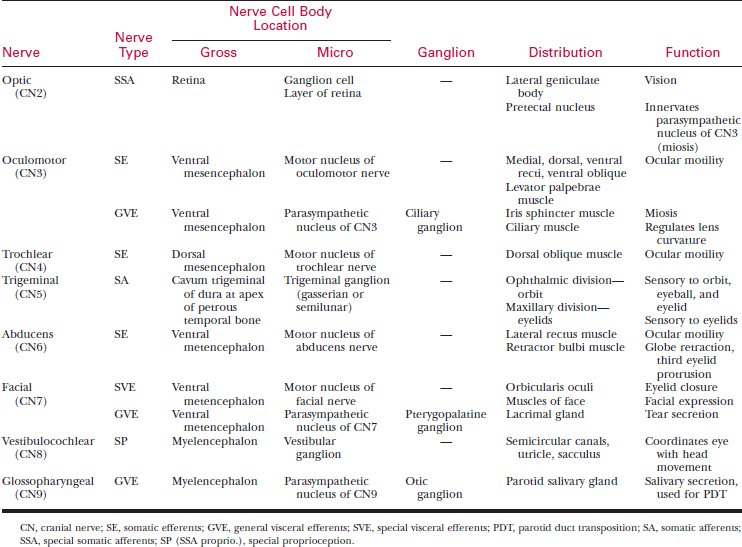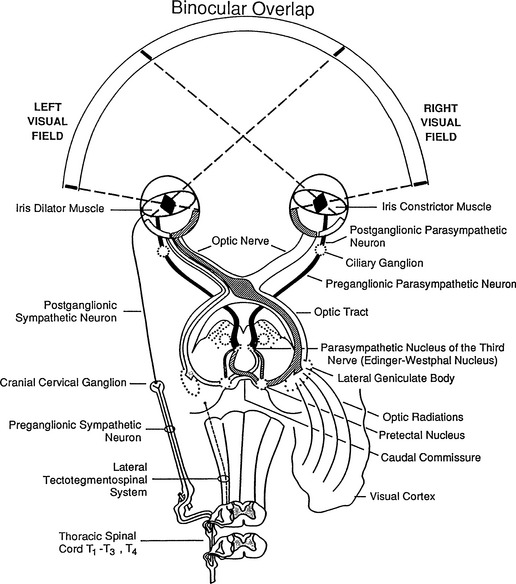Chapter 141 Neuro-ophthalmology
Clinical signs of ocular dysfunction may appear as disorders in the neuroanatomic pathways that allow normal vision. Vision is optimal when sufficiently protected eyes receive the proper amount of light while holding images steady on the retina. Many complex neurologic systems are involved in vision, including the visual sensory system (retina to visual cortex), the autonomic nervous system (pupillary function and lacrimation), the ocular motor system (neural control of eyeball, eyelid, and third eyelid position and movement), and the trigeminal somatic sensory system (pain sensation) of the eye and adnexa.
NEURO-OPHTHALMIC ANATOMY
CLINICAL SIGNS OF NEURO-OPHTHALMIC IMPORTANCE
Decreased Tear Production:
Nystagmus:
DIAGNOSIS
History
General History
General Physical Examination
Perform a complete physical examination including a thorough neurologic examination as described in Chapter 125, with particular emphasis on CN2 through CN9.
Visual Sensory System Evaluation
Visual Placing Reaction
Visual Cliff
Visual Obstacle Course
Dazzle Reflex
Menace Response
Autonomic Nervous System Evaluation
Pupillary Responses
Pupillary Light Reflexes
Measurement of Pupil Size and Symmetry
Swinging Flashlight Test
Pharmacologic Testing
Lacrimation
Schirmer Tear Tests (Schirmer 1 and 2) (see Chapter 139)
Stay updated, free articles. Join our Telegram channel

Full access? Get Clinical Tree




